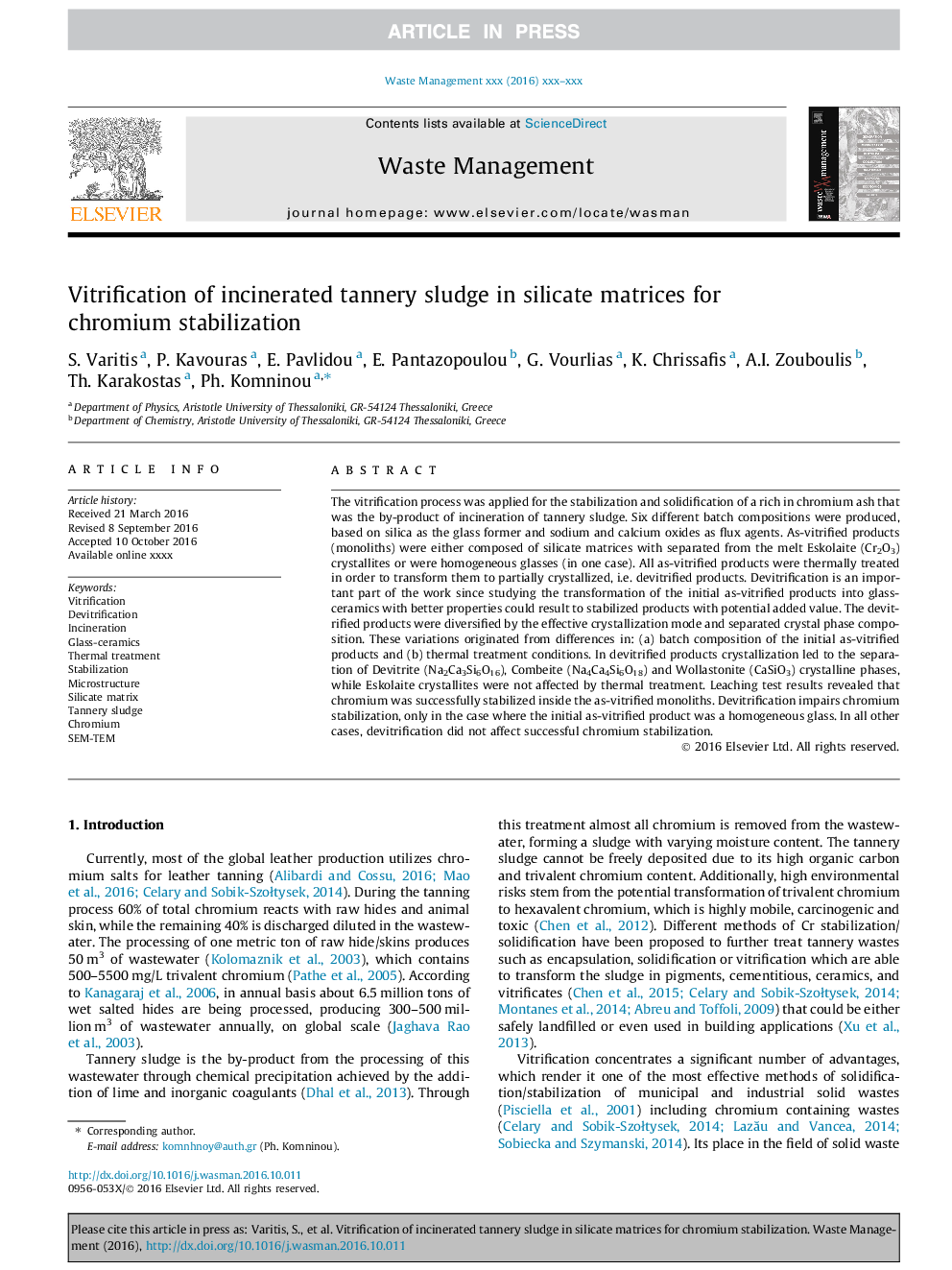| Article ID | Journal | Published Year | Pages | File Type |
|---|---|---|---|---|
| 5757028 | Waste Management | 2017 | 10 Pages |
Abstract
The vitrification process was applied for the stabilization and solidification of a rich in chromium ash that was the by-product of incineration of tannery sludge. Six different batch compositions were produced, based on silica as the glass former and sodium and calcium oxides as flux agents. As-vitrified products (monoliths) were either composed of silicate matrices with separated from the melt Eskolaite (Cr2O3) crystallites or were homogeneous glasses (in one case). All as-vitrified products were thermally treated in order to transform them to partially crystallized, i.e. devitrified products. Devitrification is an important part of the work since studying the transformation of the initial as-vitrified products into glass-ceramics with better properties could result to stabilized products with potential added value. The devitrified products were diversified by the effective crystallization mode and separated crystal phase composition. These variations originated from differences in: (a) batch composition of the initial as-vitrified products and (b) thermal treatment conditions. In devitrified products crystallization led to the separation of Devitrite (Na2Ca3Si6O16), Combeite (Na4Ca4Si6O18) and Wollastonite (CaSiO3) crystalline phases, while Eskolaite crystallites were not affected by thermal treatment. Leaching test results revealed that chromium was successfully stabilized inside the as-vitrified monoliths. Devitrification impairs chromium stabilization, only in the case where the initial as-vitrified product was a homogeneous glass. In all other cases, devitrification did not affect successful chromium stabilization.
Keywords
Related Topics
Physical Sciences and Engineering
Earth and Planetary Sciences
Geotechnical Engineering and Engineering Geology
Authors
S. Varitis, P. Kavouras, E. Pavlidou, E. Pantazopoulou, G. Vourlias, K. Chrissafis, A.I. Zouboulis, Th. Karakostas, Ph. Komninou,
